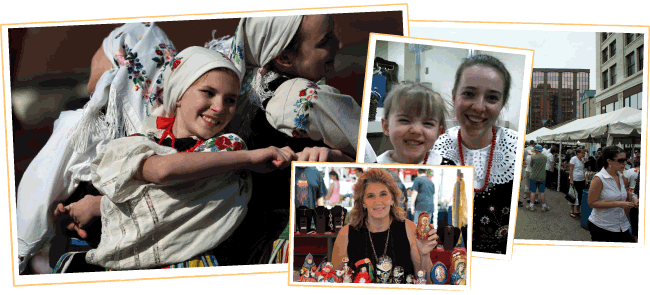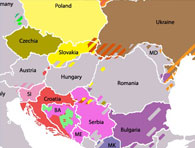Heritage

Just what and who is a Slav? What does it mean to be Slavic? These are not difficult questions to answer. Slavic people can be identified by ancestry, culture and language. These modern European nations have majority Slavic populations: Belarus, Bosnia and Herzegovina, Bulgaria, Croatia, Czech Republic, Macedonia, Montenegro, Poland, Russia, Serbia, Slovakia, Slovenia and Ukraine. Combined, the Slavs form the largest ethnic group in Europe.
 So, if your ancestors came to North America from one of the above countries, the chances are pretty good that you are at least part Slav! Also, if your ancestors arrived before 1918, many people who were identified as “Hungarian” due to their origin in the territory of Austro-Hungary were in actuality ethnically and linguistically Slavic! Living in the territory ruled by Austro-Hungary were large numbers of Poles, Slovaks, Czechs, Carpatho-Rusyns, Slovenes, Croatians, Ukrainians and Serbians.
So, if your ancestors came to North America from one of the above countries, the chances are pretty good that you are at least part Slav! Also, if your ancestors arrived before 1918, many people who were identified as “Hungarian” due to their origin in the territory of Austro-Hungary were in actuality ethnically and linguistically Slavic! Living in the territory ruled by Austro-Hungary were large numbers of Poles, Slovaks, Czechs, Carpatho-Rusyns, Slovenes, Croatians, Ukrainians and Serbians.
Not all people from Eastern and Central Europe are Slavic. Hungarians and Romanians are neither linguistically nor ethnically Slavic people. The language of Hungary is identified by linguists as a member of the Finno-Ugric group of languages. Romanian is a Romance language related to French, Italian, Portuguese and Spanish.
There are many languages and dialects which can be identified as Slavic. These languages have stark similarities with each other, and the speakers of one Slavic language can usually understand many words of another.
Click here to view a slavic map which details the Slavic family of languages and where they are spoken.